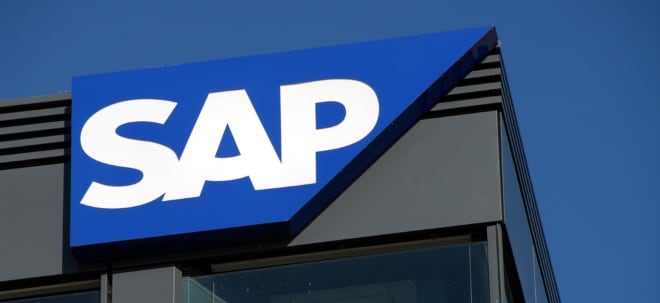Indoor Air Quality (IAQ) Solution Market to Grow by USD 13.9 Billion from 2025-2029, New Air Quality Product Launch Boost the Market, Report on How AI Is Driving Market Transformation - Technavio
NEW YORK, Feb. 4, 2025 /PRNewswire/ -- Report with the AI impact on market trends - The global Indoor air quality (IAQ) solution market size is estimated to grow by USD 13.9 billion from 2025-2029, according to Technavio. The market is estimated to grow at a CAGR of 6.9% during the forecast period. New air quality product launches is driving market growth, with a trend towards technological advances in indoor air quality solutions. However, high competition among market vendors poses a challenge. Key market players include 3M Co., Aeroqual Ltd., Camfil AB, Carrier Global Corp., ClimateCare, Daikin Industries Ltd., Ferguson plc, Germguard Technologies M Sdn. Bhd., Honeywell International Inc., Johnson Controls International Plc, Lennox International Inc., LG Corp., MANN HUMMEL International GmbH and Co. KG, Panasonic Holdings Corp., Perfect Pollucon Services, Sensirion AG, SGS SA, Spectro Analytical Labs Pvt. Ltd., Trane Technologies Plc, and UL Solutions Inc..
Key insights into market evolution with AI-powered analysis. Explore trends, segmentation, and growth drivers- View Free Sample PDF
Indoor Air Quality (IAQ) Solution Market Scope | |
Report Coverage | Details |
Base year | 2024 |
Historic period | 2019 - 2023 |
Forecast period | 2025-2029 |
Growth momentum & CAGR | Accelerate at a CAGR of 6.9% |
Market growth 2025-2029 | USD 13.9 billion |
Market structure | Fragmented |
YoY growth 2022-2023 (%) | 6.3 |
Regional analysis | North America, Europe, APAC, South America, and Middle East and Africa |
Performing market contribution | North America at 38% |
Key countries | US, China, UK, Japan, Brazil, Germany, South Korea, Canada, Saudi Arabia, and France |
Key companies profiled | 3M Co., Aeroqual Ltd., Camfil AB, Carrier Global Corp., ClimateCare, Daikin Industries Ltd., Ferguson plc, Germguard Technologies M Sdn. Bhd., Honeywell International Inc., Johnson Controls International Plc, Lennox International Inc., LG Corp., MANN HUMMEL International GmbH and Co. KG, Panasonic Holdings Corp., Perfect Pollucon Services, Sensirion AG, SGS SA, Spectro Analytical Labs Pvt. Ltd., Trane Technologies Plc, and UL Solutions Inc. |
Market Driver
Indoor Air Quality (IAQ) solutions have gained significant attention in various industries due to increasing awareness of the health risks associated with indoor pollution. HVAC systems with HEPA filters and IAQ management systems are popular solutions for maintaining good IAQ in buildings. Building automation and LEED, WELL Building Standards, and IAQM certifications are driving the market. Air pollution monitoring is crucial for identifying pollutant types such as chemical, physical, and biological pollutants. Public-private funding is fueling innovation in indoor monitors, portable air purifiers, humidifiers, ventilation systems, air filters, dehumidifiers, UV lamps, carbon monoxide alarms, and more. Government buildings, industrial establishments, commercial establishments, and residential buildings all require IAQ solutions. Market trends include new equipment sales, service, and air quality sensors. Pollutant types include chemical pollutants from oil and gas, coal and mining, power and energy, general manufacturing, and schools and universities. Physical pollutants include particulate matter (PM), while biological pollutants include mold and bacteria. Ozone generators and air quality regulations are also part of the market landscape. Solutions cater to various sectors like residential (private homes, apartments), commercial (hospitality, retail, office buildings, hotels and restaurants, long-term care communities), and others. Overall, the IAQ solution market is expected to grow significantly in the coming years.
Indoor air quality (IAQ) has emerged as a significant concern due to the increasing time spent indoors and rising pollution levels. According to recent studies, indoor air pollution is twice that of outdoor air, affecting nearly 90% of the global population. To address this issue, there is a growing demand for IAQ solutions from various industries. Technological advancements, such as IoT-based monitoring systems and real-time cyber-physical systems, have facilitated the installation of IAQ systems in homes, schools, offices, and factories. Additionally, the manufacturing sector and power plants are investing in Industry 4.0-related IAQ solutions to prioritize employee health. Moreover, portable indoor air quality monitors are gaining popularity in the market, offering users the ability to monitor air quality in real-time and take necessary actions to maintain optimal IAQ levels. Overall, the IAQ solution market is expected to grow significantly due to these factors.
Request Sample of our comprehensive report now to stay ahead in the AI-driven market evolution!
Market Challenges
- Indoor Air Quality (IAQ) is a significant concern for various sectors including government buildings, industrial establishments, commercial establishments, residential buildings, and private homes. HVAC systems, a common source of IAQ issues, require regular maintenance and upgrades. Solutions like HEPA filters, IAQ management systems, building automation, and LEED, WELL Building Standards, and IAQM certifications are essential. Indoor monitors, including portable ones, help detect pollutants such as chemical, physical, and biological pollutants. Air pollution monitoring is crucial for identifying and addressing sources of indoor air pollution. Public-private funding and government regulations are driving the market for IAQ solutions. IAQ challenges vary by sector. For instance, oil and gas, coal and mining, power and energy, and chemical industries face unique challenges. Solutions include air purifiers, humidifiers, ventilation systems, air filters, dehumidifiers, ultraviolet (UV) lamps, carbon monoxide alarms, and new equipment. Air quality sensors, measuring pollutants like Particulate Matter (PM), are essential for effective IAQ management. Ozone generators and air quality regulations are other key market drivers.
- The Indoor Air Quality (IAQ) solution market faces intense competition due to the presence of numerous local and international vendors. This fragmented vendor landscape poses challenges for global players looking to maintain their market position. Local vendors offer affordable indoor air quality solutions and equipment, such as air filters, air purifiers, and humidifiers, forcing global vendors to match their pricing. This price war adversely impacts the market growth for high-end indoor air quality solutions, equipment, and services.
Discover how AI is revolutionizing market trends- Get your access now!
Segment Overview
This indoor air quality (iaq) solution market report extensively covers market segmentation by
- Product
- Equipment
- Services
- Type
- Fixed
- Portable
- Geography
- North America
- Europe
- APAC
- South America
- Middle East And Africa
- Pollutant Type
- Chemical Pollutants
- Physical Pollutants
- Biological Pollutants
1.1 Equipment- Indoor air quality (IAQ) is essential for maintaining the health and well-being of people in residential and commercial establishments. To ensure optimal IAQ, it's necessary to regularly test for allergens, radon, CO2 emissions, gases like chlorofluorocarbons (CFCs) and hydrofluorocarbons (HFCs), and volatile organic compounds (VOCs) from electronic devices. Indoor air quality solutions include air monitor sensors, air purifiers, and humidifiers. The global market for IAQ solutions is growing rapidly due to the high demand for smart and affordable air monitoring sensors. Vendors are focusing on offering equipment that eliminates maximum contaminants, such as Honeywell's new range of air purifiers with UV LED, ionizer, and humidifier functionalities. Indoor pollution sources include asbestos, biological pollutants, air fresheners, formaldehyde/pressed wood products, and CO emissions. To combat these pollutants, it's crucial to use air pollution monitoring kits and other effective control equipment. Companies like Carrier Global Corp. And TSI offer a wide range of air quality monitoring equipment and management solutions, including air purifiers, humidifiers, dehumidifiers, ventilators, CO alarms, and UV air purifiers. TSI's precision air quality instruments and real-time air quality measurements enable better understanding of air quality. For instance, TSI's DustTrak aerosol monitors measure PM1, PM2.5, PM Respirable, PM10, and Total PM simultaneously. The availability of innovative indoor air quality equipment continues to drive market growth in the equipment segment.
Download a Sample of our comprehensive report today to discover how AI-driven innovations are reshaping competitive dynamics
Research Analysis
Indoor Air Quality (IAQ) refers to the air quality within and around buildings and structures, affecting the health and comfort of building occupants. IAQ issues can be caused by various pollutants, including Volatile Organic Compounds (VOCs), which are emitted by building materials, furnishings, and cleaning products. HVAC systems, HEPA filters, UVGI, and IAQ management systems are common solutions to mitigate indoor air pollution. LEED and WELL Building Standards promote IAQ through certification programs. IAQM, air pollution monitoring, and public-private funding initiatives support research and implementation of IAQ solutions. Indoor air pollution sources include chemical pollutants such as VOCs, physical pollutants like dust and mold, and biological pollutants like bacteria and viruses. Air purifiers, humidifiers, ventilation systems, air filters, dehumidifiers, ultraviolet (UV) lamps, carbon monoxide alarms, and particulate matter (PM) sensors are common IAQ solutions. Ozone generators are not recommended due to health concerns. Air quality regulations, such as the Clean Air Act and the European Union's Indoor Air Quality Directive, set standards for acceptable indoor air quality. Portable indoor monitors allow individuals to monitor their personal environment.
Market Research Overview
Indoor Air Quality (IAQ) is a critical aspect of building design and management, ensuring the health and comfort of occupants. IAQ issues can stem from various pollutant types, including chemical, physical, and biological agents. HVAC systems, HEPA filters, IAQ management systems, building automation, and LEED, WELL Building Standards, and IAQM are essential tools for maintaining good IAQ. Air pollution monitoring, public-private funding, and indoor monitors, including portable ones, play a crucial role in identifying and addressing IAQ issues. Government buildings, industrial establishments, commercial establishments, residential buildings, and private homes all require IAQ solutions. These solutions include air purifiers, humidifiers, ventilation systems, air filters, dehumidifiers, ultraviolet (UV) lamps, carbon monoxide alarms, and more. New equipment and services, such as air quality sensors, are also essential for maintaining optimal IAQ. Pollutant types include particulate matter (PM), ozone generators, and air quality regulations. Chemical pollutants can come from sources like oil and gas, coal and mining, power and energy, general manufacturing, schools and universities, hospitality, retail, office buildings, hotels and restaurants, long-term care communities, and more. Physical pollutants include dust, mold, and pollen, while biological pollutants include bacteria, viruses, and other microorganisms. IAQ solutions are vital for ensuring the health and comfort of building occupants, reducing energy consumption, and complying with regulations. By implementing IAQ management systems, building automation, and other solutions, building owners and managers can create healthier, more productive environments.
Table of Contents:
1 Executive Summary
2 Market Landscape
3 Market Sizing
4 Historic Market Size
5 Five Forces Analysis
6 Market Segmentation
- Product
- Equipment
- Services
- Type
- Fixed
- Portable
- Geography
- North America
- Europe
- APAC
- South America
- Middle East And Africa
- Pollutant Type
- Chemical Pollutants
- Physical Pollutants
- Biological Pollutants
7 Customer Landscape
8 Geographic Landscape
9 Drivers, Challenges, and Trends
10 Company Landscape
11 Company Analysis
12 Appendix
About Technavio
Technavio is a leading global technology research and advisory company. Their research and analysis focuses on emerging market trends and provides actionable insights to help businesses identify market opportunities and develop effective strategies to optimize their market positions.
With over 500 specialized analysts, Technavio's report library consists of more than 17,000 reports and counting, covering 800 technologies, spanning across 50 countries. Their client base consists of enterprises of all sizes, including more than 100 Fortune 500 companies. This growing client base relies on Technavio's comprehensive coverage, extensive research, and actionable market insights to identify opportunities in existing and potential markets and assess their competitive positions within changing market scenarios.
Contacts
Technavio Research
Jesse Maida
Media & Marketing Executive
US: +1 844 364 1100
UK: +44 203 893 3200
Email: media@technavio.com
Website: www.technavio.com/
![]() View original content to download multimedia:https://www.prnewswire.com/news-releases/indoor-air-quality-iaq-solution-market-to-grow-by-usd-13-9-billion-from-2025-2029--new-air-quality-product-launch-boost-the-market-report-on-how-ai-is-driving-market-transformation---technavio-302366151.html
View original content to download multimedia:https://www.prnewswire.com/news-releases/indoor-air-quality-iaq-solution-market-to-grow-by-usd-13-9-billion-from-2025-2029--new-air-quality-product-launch-boost-the-market-report-on-how-ai-is-driving-market-transformation---technavio-302366151.html
SOURCE Technavio



